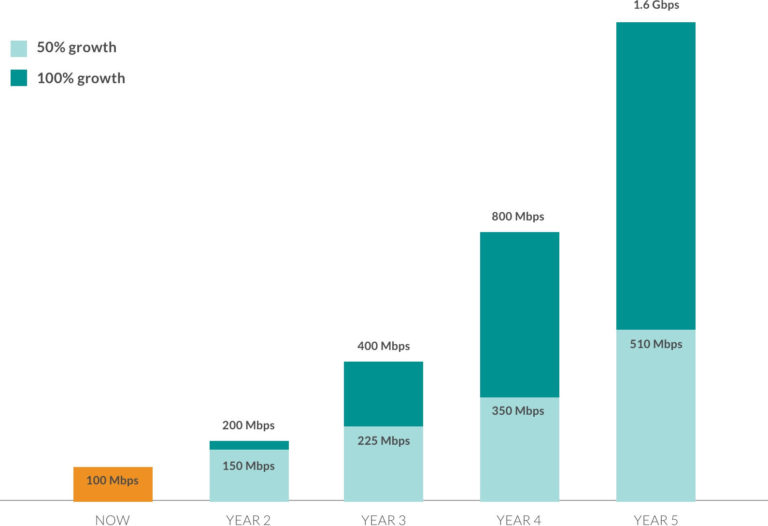Get Started
K-12 Bandwidth Goals
To reach the goal of sufficient broadband access for enhanced K-12 learning and improved school operations, the Federal Communications Commission (FCC) adopted the following connectivity goals so that school districts can meet these minimum bandwidth targets.
Increasing adoption of 1:1 learning models and other educational software has made technology essential to the 21st-century classroom. There is still work to do to ensure every school and student in the country has sufficient bandwidth and Wi-Fi in every classroom.



